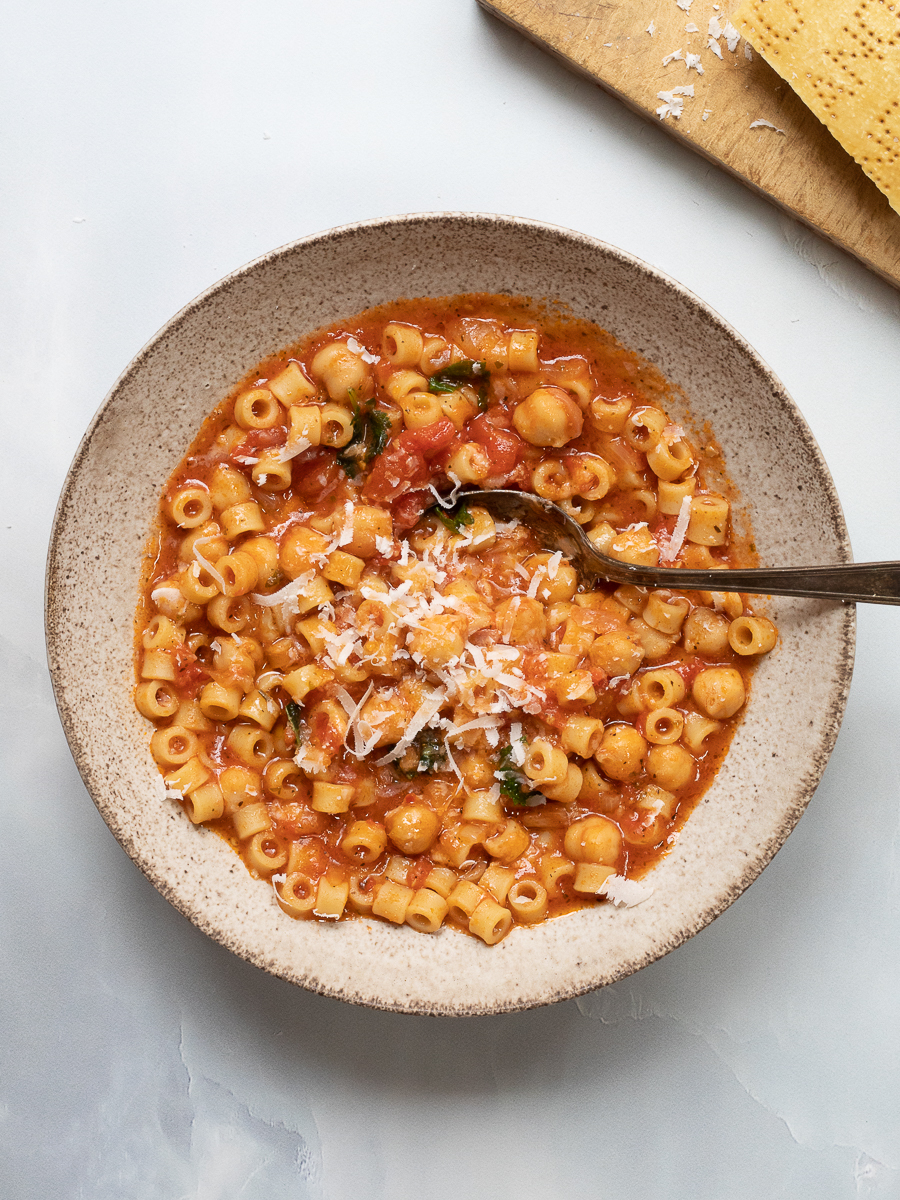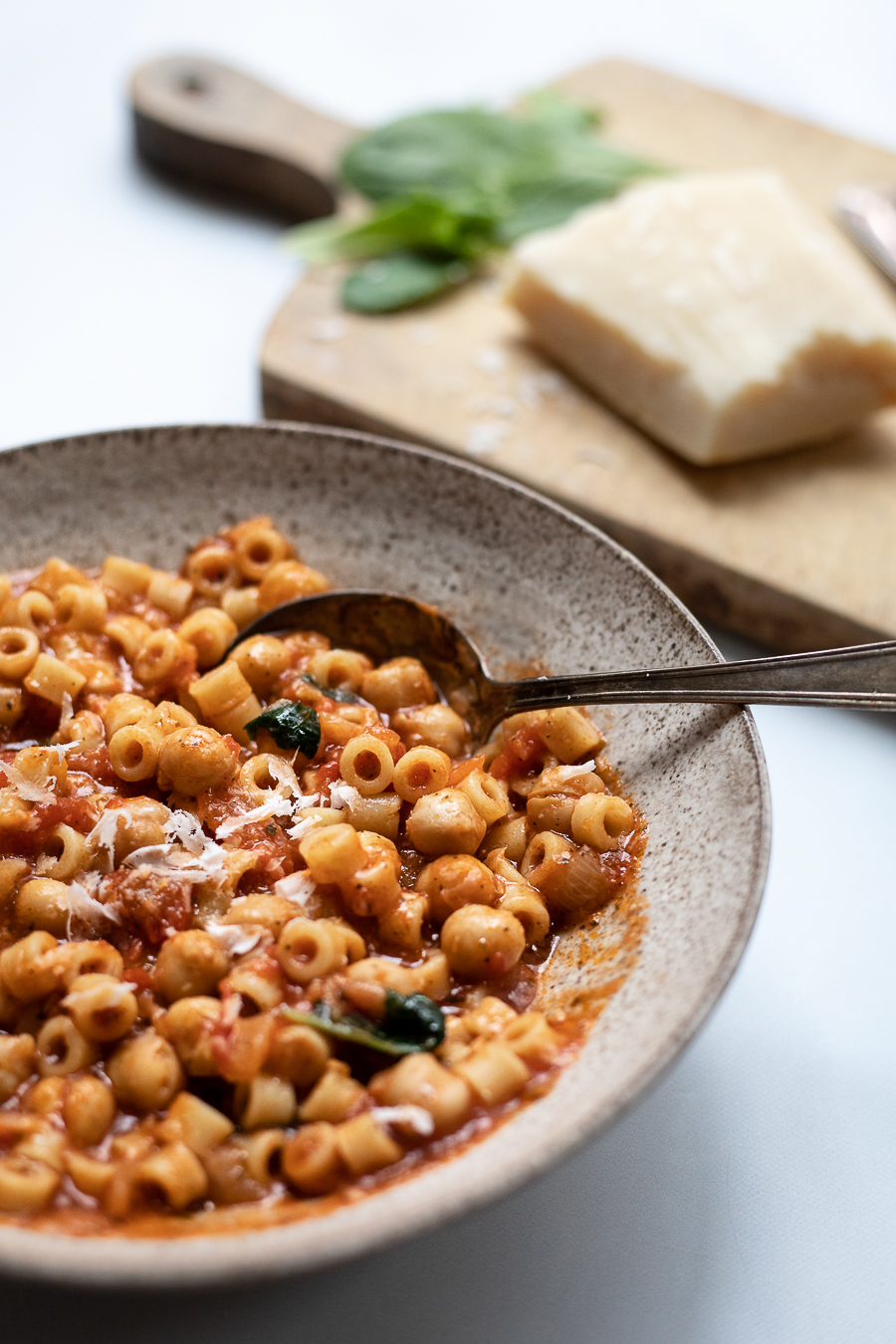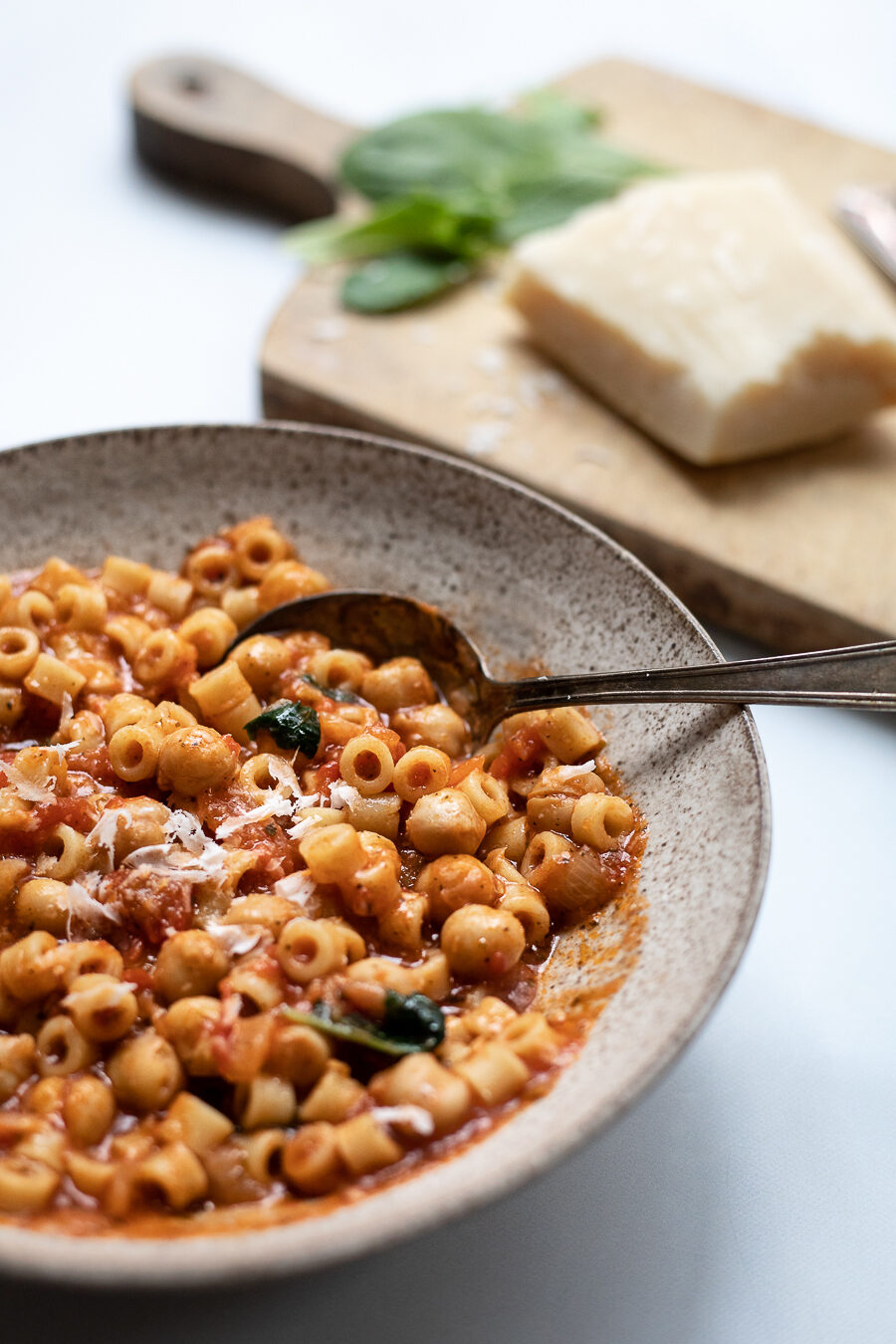Pasta e ceci, which literally means pasta and chickpeas, is an essential one-pot Roman recipe, a cousin of pasta e fagioli, brimming with juicy tomatoes, tender chickpeas, hearty greens and pasta. Everything comes together in a simmering broth in just under an hour.
I make pasta e ceci frequently as a satisfying lunch or comforting dinner, as it is easy and filling and leans on the pantry items that I likely already have on hand. Since most of us are still under quarantine to fend off this nasty global pandemic, it’s likely that you have these ingredients on hand right now, too.
Feel free to add pancetta, or fresh herbs when in season, or toss in chopped carrots, if desired.
The best part is that you can customize this dish to enjoy it stew-like (as provided below) or add more liquid and enjoy it as a soup – it’s entirely up to you. Consider doubling this recipe and enjoy it for longer!

Disclosure: As a way of supporting Chasing the Seasons, I may receive monetary compensation for my endorsement, recommendation, and/or link to any product(s). That support allows me to continue to share my recipes with you. I only recommend products that I love and/or personally use or are similar to the products I use – all at no additional cost to you. I sincerely appreciate all the love that has been given to this little blog of mine. Thank you.
I’D LOVE TO HEAR FROM YOU!
Scroll down and leave me a comment below, I’d love to hear from you! If you give this dish a go, don’t forget to share it with me on Instagram, I’d love to see your creation! Make sure to tag me @chasingtheseasons so that I don’t miss it!

Ingredients
- 3 tbsp olive oil
- 1 large onion, finely diced
- Kosher salt
- freshly ground black pepper
- 1/4 tsp red pepper flakes
- 3 cloves garlic, finely chopped or grated
- 28 oz canned whole, peeled San Marzano tomatoes (with juices), roughly chopped
- 15.25 oz can chickpeas (aka Garbanzo beans), drained and rinsed
- 3 cups chicken broth substitute with water, noting that broth will lend more flavor
- 1 tbsp dried Italian herbs
- 1 cup small pasta like Ditalini
- 1 bunch kale or escarole, rinsed and roughly chopped
- Parmigiano-Reggiano, grated for garnish
Instructions
- Add the olive oil to a medium pot over low-medium heat. When the oil is hot and shimmery, add the onions. Lightly season with salt and cook, stirring often, until tender and translucent and beginning to caramelize, 5-10 minutes.
- Add the red pepper flakes and allow them to toast for 1 minute. Add the garlic and stir until fragrant, about 30 seconds. Add the tomatoes (along with the juices) and the chickpeas, and stir to mix well. Add the chicken broth or water and season to taste with salt and pepper and dried herbs (more seasoning will be needed if using water, see Cook’s Notes below).
- Bring the broth to a boil. Add the pasta and stir consistently to prevent the pasta from sticking to the bottom of the pot. Continue to cook and stir until the pasta is al dente, tender yet firm to the bite, about 10 minutes. Taste and adjust the seasonings, if necessary.
- Remove the pot from the heat and add the kale or escarole, stir well to combine, the heat from the pot will wilt the greens just so. The consistency of the dish will likely be loose at first, allow the contents to sit for 5 minutes off the heat, stirring occasionally. The final consistency should be thick, but with movement, not sticky or pasty. If the texture is too thick, thin with a little more broth or water. Note that the pasta will continue to absorb and thicken up as it sits.
- To serve, ladle into individual bowls and garnish with a drizzle of extra virgin olive oil and grated cheese.
Notes
© chasingtheseasons. All images & content are copyright and trademark protected. Please do not use my photography without prior written permission. If you would like to republish this recipe, please re-write the recipe in your own words, or kindly link back to this post for the recipe.




